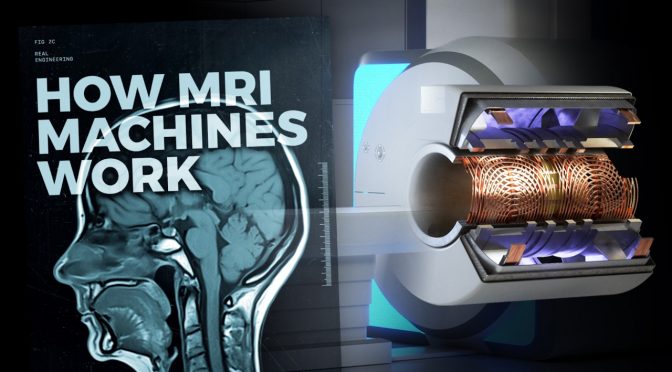Magnetic Resonance Imaging (MRI) has revolutionized the medical field by providing detailed, non-invasive images of the human body. In this video, “The Insane Engineering of MRI Machines,” by the YouTube channel ‘Real Engineering,’ we explore the incredible complexities and the remarkable engineering behind this seemingly magical technology.
The Role of Quantum Physics in MRI Technology
Magnetic resonance imaging relies on the quantum properties of hydrogen atoms found in water, carbohydrates, and proteins in the human body. The video delves into the concepts of spin, probability, and the tiny magnetic behavior of hydrogen atoms. By understanding and harnessing these properties, engineers have been able to create MRI machines that generate detailed images without the harmful effects of ionizing radiation.
The Mechanism Behind MRI Signal Generation
The video explains how MRI machines use a powerful external magnetic field to align hydrogen atoms in the body, followed by a magnetic radiofrequency pulse that nudges the hydrogen atoms out of alignment. As the atoms attempt to realign with the external magnetic field, they produce signals that can be processed into detailed images. By placing receiver coils close to the body, the strength of the signal can be maximized, improving image quality.
The Importance of Magnetic Field Strength
The strength of the MRI’s magnetic field plays a crucial role in the overall image quality. Common MRI field strengths range from 1.5 to 3 tesla, providing resolutions up to 30,000 times stronger than a fridge magnet. Higher field strengths, up to 20 teslas, can be achieved for research purposes, enabling even more detailed imaging.
Superconducting Magnets and the Energy Consumption of MRI Machines
In order to achieve the immense magnetic fields necessary for MRI imaging, engineers employ superconducting coils. These coils require temperatures close to absolute zero and do not consume power directly. The primary energy consumption of an MRI machine comes from maintaining the ultra-low temperatures necessary for the superconducting coils to function. The video states that an MRI machine consumes energy equivalent to 25 four-person households, or approximately 130,000 to 140,000 kWh per year.
Achieving High-resolution Images in MRI Technology: Superconducting Materials and Cooling Techniques
MRI machines rely on niobium-titanium as the primary superconducting material. A significant portion of the material (80%) goes into creating MRI machines due to the high demand for detailed images. To achieve superconductivity, the machines must be cooled to incredibly low temperatures using a refrigerant like liquid helium. Early MRI machines required regular refills of liquid helium, but modern machines utilize a vacuum-sealed chamber with a zero boil-off design, which is now the norm.
Imaging Process and Signal Types in MRI: T1 and T2 Relaxation for Tissue Contrast
To create images from hydrogen atoms, MRI machines need to determine the physical location of these atoms. They use radiofrequency waves to nudge the atoms and detect signals from their decay. The machines use T1 relaxation and T2 decay to identify different types of tissues, which help technicians contrast the tissues. By adjusting the time between pulse repetition and how long to wait before listening for a signal, technicians can emphasize different tissue types in the images.
Image Formation and Fourier Analysis in MRI: The Science Behind the Stripes
MRI machines deconstruct complex waves into simpler waves using Fourier analysis, which can be extended to 2D grayscale geometries. The machines physically create striped patterns needed for the Fourier analysis by changing the phase of rotating hydrogens using gradient coils. By controlling the Y and X gradients, the MRI can create patterns in all directions and frequencies, forming an image for each 2D slice.
The video
We extend our gratitude to Real Engineering for consistently producing exceptional educational content that enlightens and informs the public on complex scientific and engineering concepts. This video, like many others by Real Engineering, breaks down intricate ideas into digestible, engaging pieces, making learning enjoyable and accessible for everyone. Their dedication to spreading knowledge and fostering a community of curious minds is commendable.

